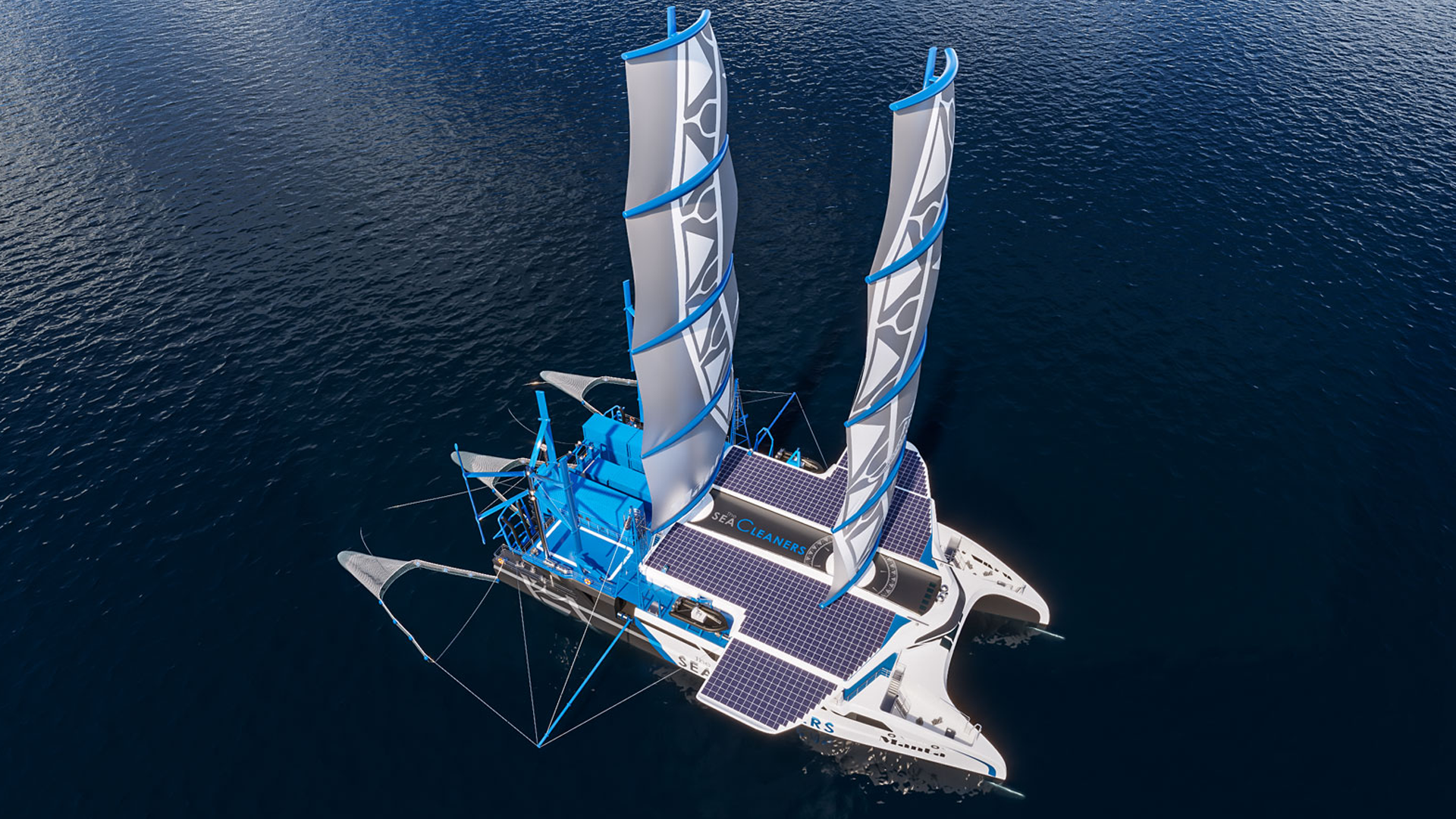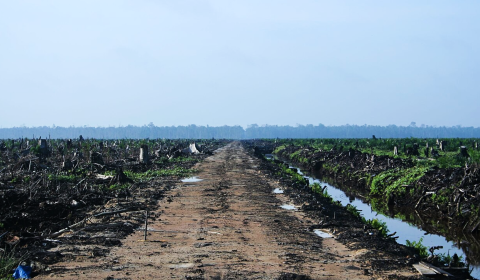The 185-foot sailboat, the Manta, collects and recycles marine waste and is powered by renewable energy.
Manta, named for the retractable wings it uses to hold solar panels, is an environmental showstopper.
Taking in three tons of waste an hour, 10,000 in a year, it is the first sea-cleaning ship capable of collecting plastic waste on an industrial scale.
The ship was masterminded by record-holding sailor Yvan Bourgon, who set up the NGO responsible for its design, SeaCleaners, in 2016.

In 2015, Bourgon had to drop out of the Transat Jacques Vabre yacht races after his boat was struck by plastic debris.
‘I’ve missed out on records and broken my boat 12 times hitting ocean debris’, he explains.
Over his 20 years of sailing, which includes being the first person to sail solo from Alaska to Greenland, Bourbon has noticed a sharp rise in the amount of marine waste in our oceans.
His NGO comprises over 58 engineers and researchers and 17 external partners, all employed to design the Manta.
The vessel is a feat of eco-engineering: two wind turbines, 500m2 of solar panels, and a plastic-eating span of 151 feet.




















